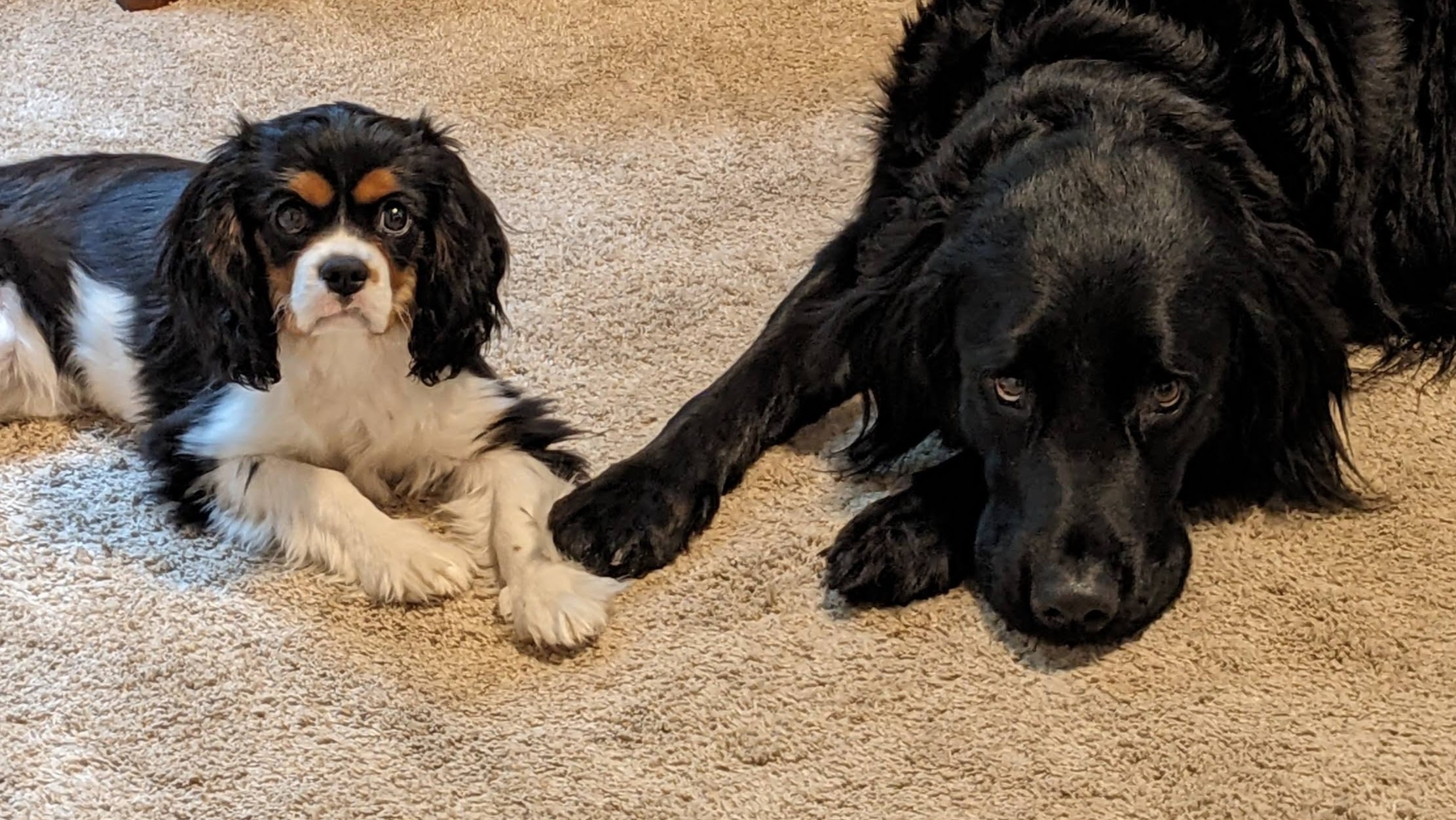A Data Analyst: Nick Hollingshead
Although my job title is “data analyst,” only a fraction of my time at the Cornell Wildlife Health Lab is spent analyzing data. I help people understand how to turn data into useful information and build the tools to help them do so. The bulk of my time is focused on building the systems and tools wildlife agencies and researchers use for collecting, managing, and sharing data.
How do I work?
Remotely. For several years, I lived in Ithaca and worked at the Animal Health Diagnostic Center, where the CWHL is located. In 2018, I moved with my family to North Carolina. Fortunately, due to the nature of my work, which is all computer-based with only the occasional need for in-person meetings, I could continue to be part of the CWHL.
My home office workspace is simple, consisting of a sit/stand desk, comfortable office chair, workstation, and a dog bed for my two office mates, who work very little and sleep most of the day away. The most dangerous part of my job is the proximity of my office to the kitchen. My essential gear includes a high-quality keyboard and mouse, and a hot cup of tea. These days, I’m enjoying Vahdam Assam black tea or Himalayan green tea.
A typical day…
My day always starts with a cup of tea steeping on a coaster with a quote that reads “Hold me closer, Tony Danza” – a widely known misheard lyric from Elton John’s Tiny Dancer. While the tea is steeping, I pick up where I left off on a project the day before. Most recently, that has been updating help documentation for the CWD Data Warehouse [link]; defining technical requirements for a wildlife health data information system in development; or writing code to serve as a “data pipeline” to connect different systems together.
Later in the morning, I’ll often meet with CWHL teammates for either weekly scheduled project check-ins or impromptu problem-solving sessions. How many people get to say that they love meetings? I do. These are my opportunities to talk one-on-one or in a small group, plan projects and solve problems. A meeting might focus on a funding opportunity, a discussion on web design and accessibility, or troubleshooting a challenging coding problem.
In the afternoon, I might meet with wildlife agency staff from New York, Tennessee, Maryland, or other states with which we collaborate. Frequently, we’ll discuss challenges related to wildlife disease surveillance and technologies or data science solutions that can be used to address those challenges. These meetings also serve as training sessions, during which I demonstrate how to use a specific application or explain the details of a data processing workflow.
Towards the end of the day, I try to catch up on time-sensitive tasks, such as summarizing West Nile virus surveillance data for New York State or making a publication-ready map of epizootic hemorrhagic disease cases in white-tailed deer. With my background in geographic information systems (GIS), I take every opportunity I can to make maps for collaborators.
At the end of the day…
My role is to support wildlife health researchers and wildlife managers. I’m fortunate that my job is to help others do their jobs better.





